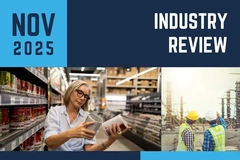
- Industry news
Industry news
- Category news
- Reports
- Key trends
- Multimedia
Multimedia
- Journal
- Events
- Suppliers
Suppliers
- Home
- Industry news
Industry news
- Category news
- Reports
- Key trends
- Multimedia
Multimedia
- Events
- Suppliers
Suppliers
Composites Industry Underlines Opportunities for Sustainable Growth

The market was stagnant, there was no investment and every market player was fighting for volume. Added to this, other materials like thermoplastics were eating into established composites markets.
After a difficult period of no growth, composites producers are optimistic about the future. Healthy business in traditional segments like marine has brought new growth in the last two years. According to the European Composites Industry Association (EuCIA) investment in new applications and a targeted approach to new markets will make this growth sustainable.
The period 2000 to 2004 was a difficult time for the composites industry. The market was stagnant, there was no investment and every market player was fighting for volume. Added to this, other materials like thermoplastics were eating into established composites markets. Since 2005 though, the industry has seen a change in its fortunes. Traditional composites segments like marine do well in better economic times. As a result, healthy business in these sectors has brought new growth in the European composites industry of some six percent.
To sustain this growth, major players like DSM Composite Resins are now reinvesting profits. “We are investing in innovative technologies and products to open up new market segments, which will bring future growth irrespective of how well the traditional segments are doing,” says Gertjan de Koning, DSM’s Business Director Composite Resins. “We are also actively supporting the European Composite Industry Association (EuCIA), since we believe a strong industry association is crucial to create favorable conditions for growth. For example, to make engineers aware of the great benefits of composites in traditional steel applications and to make it easy for them to start designing in composites, EUCIA coordinates the setting-up of educational programs, engineering handbooks and datasets.”
EuCIA believes that measures like these and innovation that targets traditional metal markets will mean sustained growth for the industry. “The market for composites is still relatively small,” says Volker Fritz, EuCIA President. “But there’s lots of potential for composites in the steel market and that’s 2,000 times bigger. If we can use this period of growth to invest in new composite applications that replace metal and gain three percent of the steel market, our industry will more than double.”










